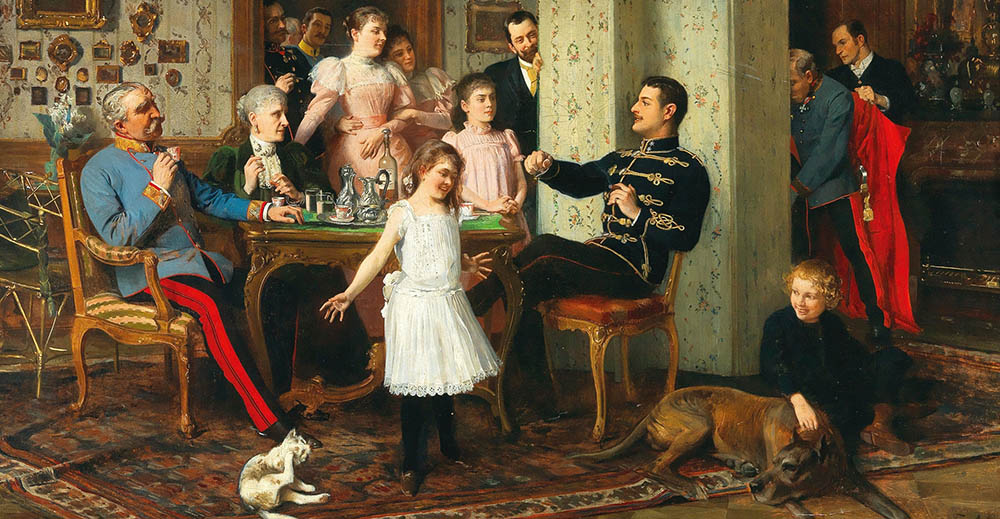Aesthetic Conservatism
Do you want to lose a culture war? Here is a simple recipe. Start by conceding to the radicals all the taste-making venues, the salons, the cafes, and the galleries. Next, concede all the educational institutions, the museums, and the endowments. Then conclude that, since the arts are now dominated by radical politics, there must be something suspicious about high culture itself. Encourage your children to become engineers, electricians, lawyers, HVAC technicians, doctors, scientists, or accountants—anything but novelists, sculptors, or film critics. When you read anything at all, read only devotional material and how-to manuals. Make your home, your clothing, and your personal affect as tacky as possible. Never listen carefully to Chopin with your children, but complain about the vulgarity of their rap music. Be strict about moral questions but a relativist about beauty, since beauty is in the eye of the beholder after all. When you hang paintings, make sure that they are of the doctor’s office variety. Buy as much kitsch as you can while complaining about consumerism and corporate elites. Above all, make no effort to change any of this by improving your literacy or your taste because such pursuits are reserved for another kind of person, someone you vaguely resent, suspect, and sometimes, envy.
An older kind of conservatism knew that the conservative must conserve. He must conserve not simply the status quo of economy, religion, and family life, but the very vitality of a whole culture. This means conserving: the distinct architectural character of different neighborhoods and the will to build new buildings that are harmonious with the old; a literary inheritance given to us in a definite canon and the capacity to read it intelligently; the inculcated sense that there are gracious and tactful ways to speak, dress, move one’s hands, or sit and the self-respect to try; the knowledge of a musical repertoire along with both the skill to perform it and the cultivated sensitivity, on the part of the audience, to be moved by it; and the conviction that some things in life are better than others simply because they are more lovely.

These things used to be staples of conservative, bourgeois respectability. Where did they go? With seeds much earlier in the eighteenth century, the real trouble began in the second half of the nineteenth century as artistic circles became almost exclusively dominated by radical politics and nihilistic philosophy. We see the type portrayed dismally in the novels of Dostoevsky. By the end of the Belle Époque leading up to World War I, the outward aesthetic forms of dress, architecture, and speech were maintained by respectable people, but the vitality had been removed because those respectable people had come to see that the makers and arbiters of high culture were enemies of bourgeois morality, enemies of God and the church, enemies even of the very beauty whose champions they were supposed to be.
Then the World Wars came and eviscerated any self-confidence Europeans had left in the aesthetics of the old way. From 1914 on, we see a hard turn toward an avant-garde aesthetics of repudiation. At that point, the well-to-do faced a choice. They could either pursue an air of aesthetic sophistication with the nihilists or be counted among the rubes with their still intact families. Understandably, good people chose the latter.
But there is a third option. Some few have chosen and we still can choose an aesthetic conservatism. Such a conservatism would not neglect the important work of preserving the economic, religious, and moral foundations of our culture, but it would also include among its work a preservation of the aesthetic. Such a conservatism would recognize the incalculable treasury that we have inherited in Western art, literature, music, drama, and architecture. It would understand that such things depend upon centuries of refinement and that they are fragile, they must be guarded and preserved carefully because they can be lost rapidly when we fail to prioritize them among our various pursuits (we’ll have to spend some money). Such a conservatism would not be shy about liking some things more than others and making prejudicial judgments about their worth on the basis of taste. And such a conservatism would be supported, ideally, not just in the abstract but in the very manner of its advocates. They would put on ties and hang better art in their homes. The alternative is bad for the brand.
